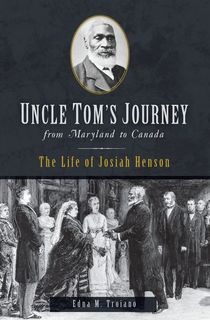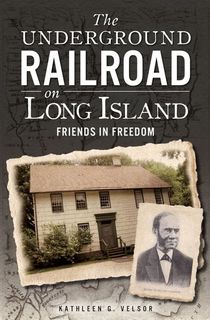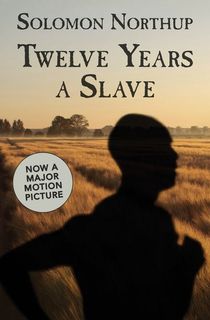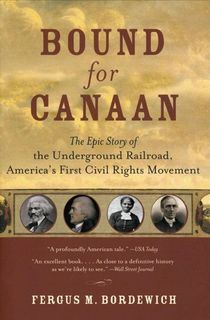Most Americans have heard about the Underground Railroad, but it remains a poorly understood historical event by the general population. There are many misconceptions about this topic, one of them being that the Underground Railroad was an actual railroad. In reality, it was a network of people—encompassing all different religions and races—offering secret routes, shelter, and aid to help slaves escape from the South in the early to mid-19th century.
The term “railroad” was used due to the fact that the railroad was a new transport system able to whisk people away quickly, just as the Underground Railroad did. The network’s allies also used railroad terminology to communicate in secret. Enslaved Black Americans utilized the Underground Railroad primarily to escape into free northern states and Canada. The system was aided by abolitionists and allies who wanted to see slavery end.
Today, it’s still possible to see Underground Railroad safe houses. For instance, if you stay at or visit Philadelphia, you can see the Johnson House, which still looks the same today as it did in 1768. If you want to know more about the Underground Railroad, the books below will give you more details about the escape routes taken by African Americans before emancipation and the experiences of the people organizing said routes.
Related: 10 African American History Books Every American Should Read

Sketches in the History of the Underground Railroad
The secrecy involved in the Underground Railroad made it one of the most mysterious topics in American history in the mid-19th century, to the extent that there were claims that approximately 100,000 slaves escaped through the Underground Railroad. (In reality, about 1,000 people escaped per year). Sketches in The History of the Underground Railroad was first published in 1879. It explores all the thrilling incidents of Black Americans who fled their slave owners and the brave souls that helped them along the way. Eber Pettit, one of the conductors on the Railroad, reveals the horrors of slavery before emancipation and his experiences through these sketches.

Uncle Tom's Journey from Maryland to Canada
Author Edna M. Troiano narrates the extraordinary life of Maryland’s Josiah Henson—the real inspiration for the title character in Harriet Beecher Stowe's Uncle Tom's Cabin. The real Uncle Tom was born into slavery and auctioned as a child to pay off his owner’s debt. After showing great physical strength and leadership abilities, Henson earned his new master’s trust.
Courageously, he escaped to Canada with his wife and children in 1830. He later founded the Dawn Settlement, which employed and educated former slaves. Henson constantly returned to the United States to help other slaves on their way to freedom. Troiano also explores the sites devoted to Henson’s memory in this riveting book.

On the Edge of Freedom
David G. Smith’s On the Edge of Freedom is one of the most nuanced and sophisticated studies about the Underground Railroad. Fugitive slaves east of the Appalachian mountains had to pass through Adams, Franklin, and Cumberland counties, making this region of Pennsylvania a hot spot for Underground Railroad activity.
Related: Illuminating Books About the History of Race in America
In this epic book, historian David G. Smith explores the victories of abolitionists in south-central Pennsylvania and how kidnappers who seized African Americans as fugitives were prosecuted. Smith goes beyond the surface to explain how the Fugitive Law was enacted in 1850 and the effects that it had. On The Edge of Freedom also illuminates how even those who were against slavery were not always working in the best interest of Black people, giving the book title new meaning.

The Underground Railroad on Long Island
Kathleen Velsor documents what was previously an oral history on the heritage of Long Island in this book. The Underground Railroad on Long Island reveals the surprising role that the island played in the Underground Railroad, dating back to the arrival of Quakers in the 17th century. Velsor revisits safe houses and families in Long Island that assisted the escape of African American slaves. Long Island’s legacy in the Underground Railroad lives on today in this fascinating history account.

Twelve Years a Slave
In the 19th century, Solomon Northup—a free-born Black man—was kidnapped and forced into slavery for 12 years. Northup spent those years on plantations in Louisiana, experiencing unimaginable hardship and inhumane treatment. With the help of his family and his father’s former master, he was able to win back his freedom. Northup reveals his unforgettable experience in this memoir, which became a bestseller in 1853 and has since been adapted into the Academy Award-winning film of the same name. Twelve Years a Slave gives readers an invaluable glimpse into this shocking portrait of American history.

The Underground Railroad Records
William Still’s Underground Railroad Records was published in 1872. As one of the conductors for the Underground Railroad, Still helped about 800 slaves escape. In this book, he gathered letters, biographical sketches, ransom notes, and arrival memos from the people he encountered along the way. The Underground Railroad Records is a riveting collection of the hardships and struggles of slaves seeking freedom at any cost. Still reveals—in eloquent narrative form—the most remarkable campaign of civil disobedience in the history of America. With a new introduction by author and journalist Ta-Nehisi Coates, this edition is a timeless testament to the courage and resilience demonstrated by the escapees.

Gateway to Freedom
The issue of fugitive slaves played a vital role in bringing about the Civil War, which would not have occurred without the actions of African American slaves who wanted to escape to freedom, and the northerners who defied the law to help them on their quest. New York was home to the North’s biggest free Black community. Slave catchers and kidnappers roamed the city, capturing free African Americans—primarily children—and sending them south for the slave trade. The city’s freemen collaborated with white abolitionists to safeguard fugitives.
Related: Black Patriots and Loyalists: An Untold Story of the Revolutionary War
Eric Foner’s Gateway to Freedom traces the inchoate stages of the Underground Railroad from 1820 to 1830. It explores the formation of the New York Vigilance Committee (an early iteration of the Underground Railroad). The Pulitzer Prize-winning historian also reveals people who assisted the escapees, especially white abolitionist Sydney Howard Gay, and how the Civil War helped push America to emancipation.

Bound for Canaan
Before the Civil War, freedom-seeking slaves and white abolitionists worked together to save many lives, mainly at the expense of risking their own. The network was called the Underground Railroad for a reason; its secrecy meant that accounts of its operations are rare. Yet, Fergus M. Bordewich’s Bound for Canaan illustrates the lives and times of the so-called conductors, passengers, and station managers of the Underground Railroad. This epic book enlightens readers on how the Underground Railroad led to America’s first racially integrated movement for change, far before the advent of the Civil Rights Movement.
This post is sponsored by Open Road Media. Thank you for supporting our partners, who make it possible for The Archive to continue publishing the history stories you love.


